В Baldur's Gate 3 «Паладин» представляет собой игровой класс мощных и благородных воинов, способных применять в битвах как физическую силу, так и светлую магию. Их выживаемость, впечатляющий урон и мультиклассовая вариативность с каждым патчем привлекают к себе внимание все большего количества игроков.
Роли-плей за паладина имеет немало нюансов: от грамотного выбора расы, до необходимости следовать особому своду законов, за нарушение которых ваш рыцарь света неизбежно пойдет по пути клятвопреступника. В этом гайде мы затронем все основные особенности класса, а также рассмотрим подробный билд на лучший боевой подкласс для паладина — «Клятва возмездия».
Лучший билд на Паладина «Клятвы возмездия» в Baldur’s Gate 3
Вводная информация по классу

«Паладин» в BG3 — это, по своей сути, класс воинов-заклинателей. Отличный вариант для тех, кто не может выбрать между грубым рукопашным боем и эффектной, но чаще заточенной на дальние дистанции, магией. Из паладинов получаются классические дамагеры с навыками поддержки, а с их способностью носить доспехи любой тяжести — еще и мощные танки. Но для достижения максимальной эффективности сильных сторон этого класса, вам придется пожертвовать скоростью — паладины медлительны, так как проседают в ловкости (а также интеллекте и мудрости).
Основные особенности класса «Паладин»:
- Высокий показатель ХП, повышающийся с поднятием каждого уровня;
- Способность носить все виды доспехов и оружия + щиты;
- Повышенная эффективность атак против сил тьмы (нежити, дьяволов и т.д);
- Контроль толпы (запугивание врагов + устойчивость к большому урону);
- Повышенный урон по одной цели.
Минусы класса:
- Высокая потребность в ячейках заклинаний;
- «Клятвы» — свод законов, обязующий ограничивать себя в некоторых сюжетных выборах;
- Медлительность;
- Ограниченный выбор заклинаний.
Приоритетные характеристики
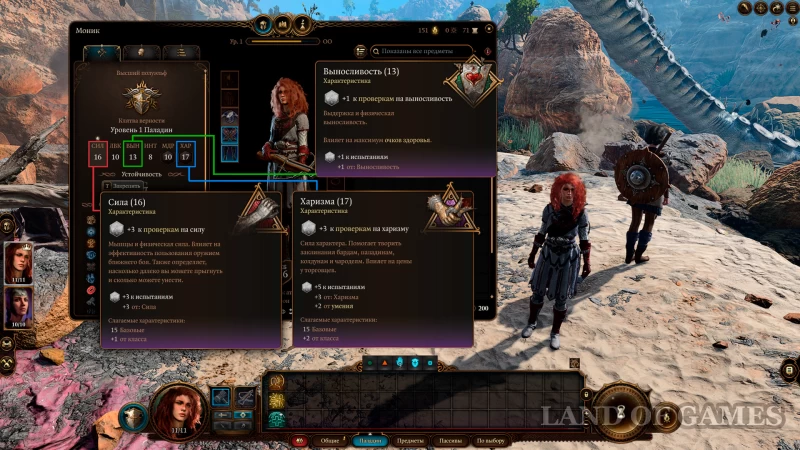
Прокачка паладина очень плотно завязана на повышении трех основных статов: силы, харизмы и выносливости (первые два имеют основной приоритет).
Из-за того, что важность всех трех статов для паладинов примерно равна, вам придется искать грамотный баланс через выбор экипировки, вспомогательных артефактов и зелий, а также при подборе напарников. Если выбирать самый малозначительный показатель, то им будет интеллект (стат не приносит рыцарям света какой-то существенной пользы).
Важные статы и их влияние на геймплей паладина:
- Сила — основной модификатор урона для персонажей ближнего боя + от него зависит, какой вес багажа сможет переносить персонаж (паладины в основном носят самое тяжелое обмундирование);
- Харизма важна не только для сюжетных выборов (так как влияет на основной «навык общения» паладинов — Запугивание), но и дает бонус к урону важнейшего классового заклинания — Божественной кары;
- Выносливость главным образом влияет на показатель здоровья, который делает из паладинов отличных танков с высокой устойчивостью к входящему урону.

Не самую явную пользу в прокачке рыцарей света может сыграть ловкость, влияющая на инициативность героя, от бонуса которой зависит, каким по счету персонаж будет действовать в поединке. Ее есть смысл качать, если вы активно используете зелья на силу и играете через одноручное оружие.
Но если ваш паладин — уверенный танк с высоким здоровьем, ловкость будет в разы менее полезной, чем три основных характеристики.
Подклассы
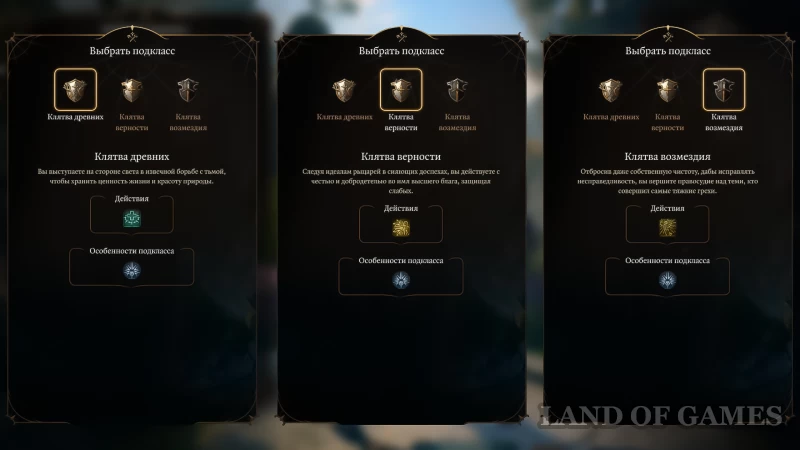
При выборы класса «Паладин» , вы можете определить для него один из трех подклассов:
- «Клятва древних» — приоритет исцеляющим навыкам\ лучший выбор для паладина на позиции поддержки;
- «Клятва верности» — приоритет защитным навыкам\ универсальная Клятва для сборки стандартного паладина с балансом между боевыми и саппортящими умениями;
- «Клятва возмездия» — приоритет нанесению урона\ делает паладина полноценным дамагером с различными абилками к ослаблению врагов.
В зависимости от выбранного подкласса, в багаже вашего паладина появится свод уникальных для каждой клятвы правил. А после их нарушения, вам станет доступен скрытый подкласс — «Клятвопреступник». В таком случае, рыцарь света отказывается от благоволения божественных сил и встает на путь тьмы (герой лишается всех навыков света и открывает доступ к некромантии).
Мультиклассовость

Начиная со 2-го уровня возвышения паладина, вы можете выбрать путь мультиклассовой прокачки своего героя. Так рыцарь света получит скиллы сразу нескольких классов, жертвуя при этом высокоуровневыми особенностями стартового класса.
Возможность добавлять классы есть на всех режимах сложности, кроме Истории.
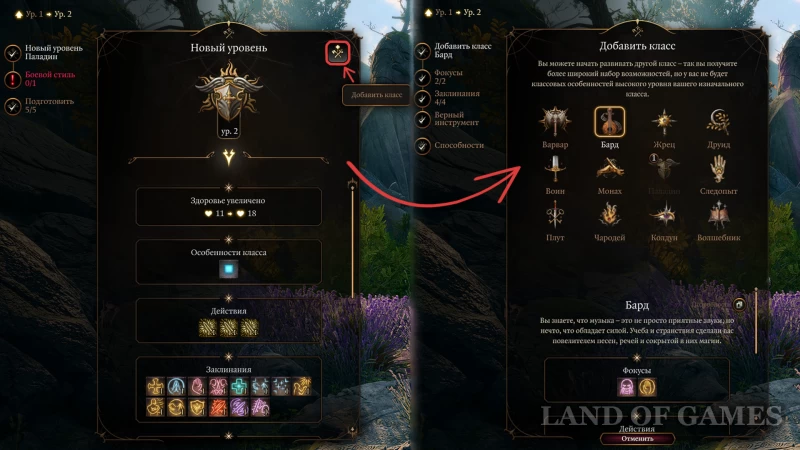
Новый класс добавляется по значку в верхнем правом углу плашки во вкладке «Новый уровень», сделать это можно на любом уровне (за исключением стартового), вплоть до 12-го.
Основная польза мультиклассовости для паладина — получение дополнительных ячеек заклинаний, которых у рыцарей света по дефолту довольно мало (дальше третьего круга они не прибавятся). Исправив эту проблему, комбинированный паладин получает преимущество перед своей «Чистой» версией — той, при прокачке которой не задействуются дополнительные классы.
Вот примеры дополнительных классов и их преимущества:
- Воин открывает доступ к важному скиллу «Порыв к действию», который позволяет совершать дополнительное действие в текущем ходу + при выборе подкласса «Чемпион» на 3 уровне, получает эффект «Улучшенный критический удар», повышающий шанс крита;
- Бард дает дополнительные ячейки заклинаний, повышает атакующую эффективность при выборе подкласса «Коллегия мечей» и добавляет боевые стили;
- Чародей заливает ячейки заклинании и делает паладина более мобильным в бою из-за особенности подкласса «Чары бури» + усиливают урон от Божественной кары при выборе пассивки «Метамагия: сдвоенное заклинание»;
- Жрец больше подойдет паладинам поддержки\также прибавляет ячейки магических атак и открывает «Благословение бога войны» — пассивку с 6-го уровня в подклассе «Домен войны», которая дает 10 очков баффа атаки ближайшему союзнику;
- Колдун прибавляет не так много ячеек заклинаний, как хотелось бы, но дает возможность восстанавливать их после короткого отдыха.
Ключевая способность: Божественная кара
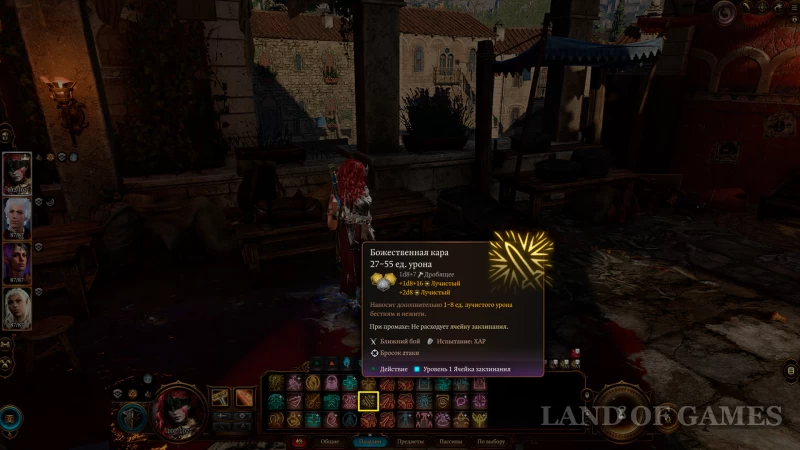
Божественная кара — это уникальная атака класса «Паладин», на усиление которой направлено большинство этапов прокачки. Герой тратит ячейку заклинаний и может атаковать врага в ближнем бою уроном от оружия + лучистой энергией [2d8 (+1d8 по нежити и дьяволам) +характеристики оружия].
Эта мощная атака является полноценным действием и, как упомянуто выше, тратит ячейки заклинаний. А так как их у паладинов мало, здесь и появляется смысл мультиклассироваться с теми, у кого ячейки заклинаний прибавляются при повышении уровней.
Не меньшую пользу для паладинов приносят навыки классов, которые влияют на крит. урон (например, пассивка «Улучшенный критический удар» воинов), ведь Божественная кара задействуется при нанесении крит. удара.
Помимо прямого нападения, Карой можно контратаковать. Но при этом вы все равно будете тратить ячейки заклинаний. Если у вас нет желания делать это сверх меры, советуем отрегулировать раздел «Ответные действия» (показан на 1-м скриншоте выше): здесь вы можете выбрать, какие кары будут срабатывать в ответ на удары врагов, а также — будет ли это требовать вашего подтверждение во время боя.
Вот несколько советов по использованию Божественной кары:
- Следите за расходом ячеек заклинаний и не тратьте высокоуровневые на слабых противников;
- Снимите автоматическое использование контратак Карой во время боя — так вы избежите незапланированных потерь ячеек на полуживых третьесортных мобов;
- Отслеживайте уязвимости врагов и используйте атаку на тех, кто особенно восприимчив к лучистому урону;
Лучшие расы
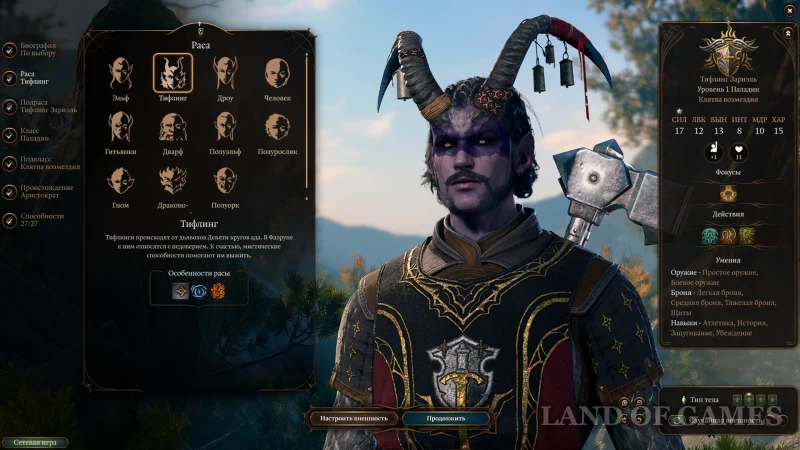
Если говорить о паладине через «Клятву возмездия», то лучшими обладателями класса будут те, в расовые особенности которых входят полезные боевые пассивки. Среди них можно выделить двоих:
- Полуорки выигрывают сразу по двум особенностям: после добивающего удара не умирают, а возвращаются в строй с единицей здоровья + проводя крит. удар в ближнем бою, получают бонус к урону;
- Тифлинги Зариэля сильны физически, невосприимчивы к огню и имеют преимущество в испытаниях Запугивания + с поднятием уровня получают доступ к двум мощным заклинаниям Кары (Жгучей и Клеймящей);
Отдельно отметим подкласс Золотых дварфов: эти мастера своего дела весьма живучи, поэтому имеют повышенный запас базового здоровья (+1) и увеличивают этот параметр с поднятием уровней (также +1 за каждый).
Все перечисленные выше расы очень хорошо играются с классом «Паладин», но в целом не обязательны к выбору. Не забывайте, что некоторые из них сюжетно могут затруднять отыгрыш за принципиального и доблестного паладина.
Происхождение
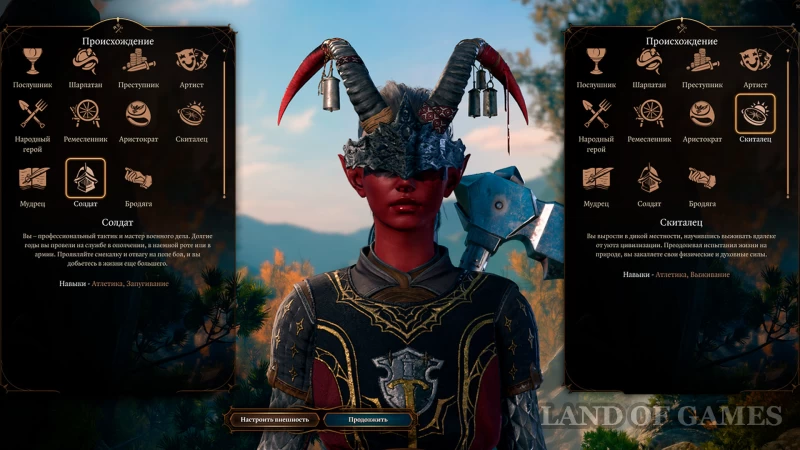
Самым оптимальным выбором происхождения для паладинов будет «Солдат», так как доступные в случае выбора навыки Атлетики (+5 к проверкам) и Запугивания (+4 к проверкам) являются производными от параметров Силы и Харизмы соответственно — а это самые приоритетные скилы доблестных воинов света. Однако само происхождение — это скорее сюжетный выбор, поэтому вы можете рассмотреть еще несколько вариантов:
- Аристократ: дает навыки Истории (+1) и Убеждения (+4), полезные в сюжетных диалогах. Убеждение также получает бонус от показателя Харизмы;
- Ремесленник: навыки Убеждения (+4) и Проницательности (Мудрость/+2). Довольно полезно в общении с персонажами и повышает шанс на успешные сделки;
- Скиталец: навыки Атлетика (Сила/+5) и Выживания (Мудрость/+2). Второе умение поможет вам с большей вероятностью не упустить ценные находки при исследовании мира.
Если вы не планируете превращать своего паладина в Клятвопреступника, выбирайте то происхождение, которое не будет идти вразрез с нерушимыми постулатами этих воинов света.
Выбор происхождения добавляет очки к полученным умениям (до +5), а также открывает соответствующие проверки в диалогах.
Навыки
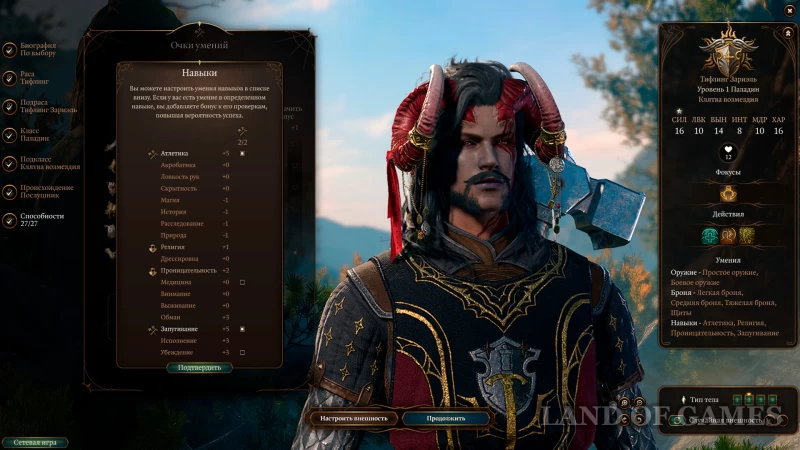
И перед тем, как перейти к основному билду, коротко обсудим самые полезные навыки для паладинов:
- Атлетика – от модификатора Силы/ Повышает шанс на успех от отталкивания врага + уменьшает шанс того, что оттолкнут вас. Увеличивает дальность прыжка на метр за каждую единицу параметра;
- Запугивание – от модификатора Харизмы/ Повышает вероятность запугать собеседника и убедить к выгодному исходу разговора;
- Убеждение – от модификатора Харизмы/ Повышает вероятность побуждения собеседника к выгодному исходу разговора;
- Медицина – от модификатора Мудрости/ Повышает вероятность распознать болезнь, яд или лекарства, эффективен для хиллящих скилов и стабилизации напарников на грани смерти;
- Проницательность – от модификатора Мудрости/ Повышает вероятность распознать реальные мотивы оппонентов, ложь или их действия наперед.
Играя за мультиклассового героя, вы естественно получите больше умений, свойственных каждому классу, и как следствие – уровняете те из них, которые уходят в минус. Можете учитывать это при прокачке своего героя и менять бонусные очки по вашему усмотрению (их числовое значение также растет с поднятием уровня).
Поэтапная прокачка Паладина «Клятвы возмездия»
Этот билд предполагает сочетание двух классов, Паладина «Клятвы возмездия» и Воина (которого мы добавим на 11 и 12 уровнях). Однако, к двум последним уровням прокачки мы покажем вариант для Чистого паладина без мультикласса, а после сборки: еще один билд для 3-10 уровней с добавлением класса Бард.
Уровень 1
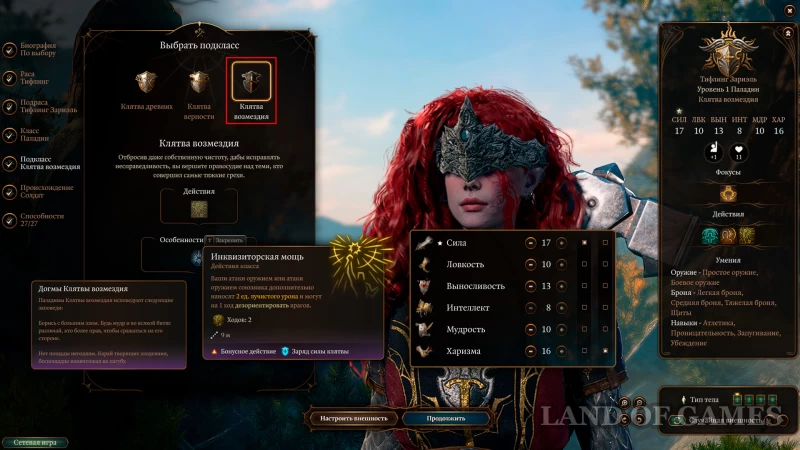
Первый уровень вы получите на старте игры, параллельно с созданием персонажа. Вам нужно определиться с расой, обязательно выбрать подкласс «Клятвы возмездия», в происхождении взять Солдата и распределить очки характеристик между двумя основными статами: силой и харизмой.
Для большей наглядности, обратите внимание на прокачку в таблице ниже:
| Класс | Подкласс | Особенность | Действия |
|---|---|---|---|
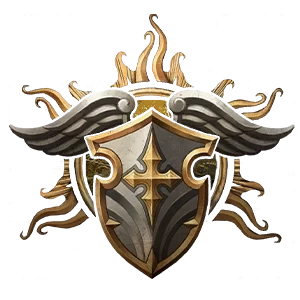 Паладин |
Клятва возмездия |
|
|
На уровне 1 у паладинов нет ячеек заклинаний, но появляются сразу три действия:
- Божественное чутье. Способность, эффективная против аасимаров, дьяволов и нежити: ваш герой в качестве доп. действия получит преимущество в атаках против этих существ;
- Инквизиторская мощь. Еще одно доп. действие, в радиусе которого вы или ваши напарники получают +3 ед. лучистого урона к своим атакам и могут ввести в замешательство соперников;
- Возложение рук. Хиллящий скилл, который расходует заряды клятвы и предлагает три действия на выбор: восстановление 2 или 4 единицы здоровья, либо избавление цели от болезни или яда (на него расходуются особые Заряды).
Заряд силы клятвы – уникальный для класса «Паладин» ресурс, который расходуется при выполнении определенных действий/восполняется на коротком отдыхе.
Совет по геймплею [1 уровень]: пока у вашего паладина нет Божественной кары, сосредоточьтесь на сюжете, поиске компаньонов (Шэдоухарт, Гейл и Астарион), оружия и экипировки. Повысить эффективность атак вашего героя также помогут «Эликсир силы холмового великана» и «Масло точности».
Уровень 2
Со второго уровня открываются варианты выбора заклинаний и стиля боя. Но главное – атака «Божественная кара» (включающая в себя одно основное и два ответных действия), делающая рыцаря кратно сильнее. При получении Кары, сразу настройте варианты контратаки (Инвентарь → Заклинания → Ответное действие).
| Стиль боя | Действия | Сборка заклинаний |
|---|---|---|
|
|
Выбрав «Двуручное оружие» своим боевым стилем, вы сможете свести к минимуму удары с пониженным дамагом, так как пассивка позволяет перебросить кубик, если на внутриигровом розыгрыше расчета урона вам выпадает 1 или 2 (при условии, что вы атакуете двуручным оружием).
Из заклинаний лучше выбрать:
- Жгучая кара. Атака с дополнительным уроном огнем 1d6 (1~6 ед.) + аналогичный дот урон по цели на следующие 10 ходов (или пока враг не пройдет спасбросок Телосложением). Будьте внимательны, так как способность тратит и ячейку доп. действия;
- Громовая кара. Позволяет оттолкнуть врага на 3 метра и, возможно, сбить его с ног. Эту оглушающую способность можно использовать для контроля толпы или в начале боя, для дебаффа по сильному сопернику;
- Щит веры. Кастует волшебное мерцание и поднимает класс брони на 2: лучше использовать перед боем, в котором высока вероятность получить много входящего урона;
- Божественная благодать. Добавляет к атаке оружием 1d4 (1~4 ед.) лучистого урона.
- Исцеление ран. Ситуативный лечащий навык, восстанавливающий 1d8+3 (4~11 ед.) здоровья: он тратит ячейки заклинаний, поэтому лучше использовать в критической ситуации, когда нет других способов излечиться
Совет по геймплею [2 уровень]: получив магические способности на выбор, старайтесь не тратить на них ячейки заклинаний, обходясь только Карами (все остальные скиллы поддержки можно использовать у той же Шэдоухарт). Во время боя сосредоточьтесь на нанесении повышенного урона Божественной карой.
Уровень 3
С 3-го уровня у вас появятся подклассовые действия и дополнительный слот заклинаний, а также пассивная устойчивость к болезням и пара Заклинаний клятвы.
| Особенность | Умения подкласса | Доп. заклинание |
|---|---|---|
|
|
Пассивная особенность «Божественное здоровье» избавляет вашего паладина от негативного воздействия болезней. Помимо этого, герой открывает действия подкласса «Клятва возмездия»:
- Обед вражды. Нишевое умение, позволяющее получить преимущество при бросках урона против цели в радиусе 3 метров;
- Порча. Не самое полезное действие в сборке, которое еще и тратит ячейку заклинаний: накладывает на три цели помеху к броскам атаки и спасброскам (-1d4).
- Преграда для врага. Замедляющая абилка, накладывающая на выбранную цель помеху при проверках статов и атаках: пугает врага, после чего вам будет легче попасть по нему (особенно эффективна на нежити и бестиях);
- Метка охотника. Ключевой навык 3-го уровня прокачки: вы можете отметить свою цель, после чего все атаки по ней будут наносить доп. колющего урон 1d6 (1~6 ед.), а если цель умрет – метку можно будет перекинуть на другого врага без траты ячейки заклинания.
В дополнение к набору заклинаний вы можете взять «Приказ» – действует на расстоянии 18 метров и отлично контролирует толпу, так как заставляет цель совершить одно из 5 действий на выбор: подойти, бежать, бросить, упасть плашмя или остановиться (по время боя существо потратит на приказ весь свой ход).
Совет по геймплею [3 уровень]: теперь у вас появляется больше вариантов развития боевой ситуации, и вы можете более уверенно выбирать, нужен ли вам контроль толпы, критовая атака или усиление. Действия подкласса открывают для вас новые преимущества над врагами, на которые не нужно тратить еще и бонусные действия (в отличии от большинства заклинаний со 2 уровня).
Уровень 4
Далее нужно выбрать черту, и самый простой вариант на этом уровне – улучшение характеристики (+2 к Силе). В таблице ниже привели еще пару полезных черт, а также варианты выбора доп. заклинаний:
| Доп. заклинание | Черта на выбор |
|---|---|
|
Защита от зла и добра или
|
|
Несмотря на то, что прибавка к Силе будет самым простым и эффективным решением, вы можете приглядеться еще к двум чертам:
- Неистово атакующий. При нанесении удара оружием ближнего боя, игра будет бросать сразу два кубика и использовать наибольшее из выпавших значений – так вы еще больше снизите вероятность атак с пониженным уроном (но похожую механику дает стиль боя «Двуручное оружие», который мы выбираем на 2 уровне Паладина);
- Бдительный. Бонус +5 к инициативе и полный иммунитет от захвата врасплох: с этим умением, ваш паладин больше не будет действовать в числе последних.
На первом скриншоте в начале пункта мы указали все полезные магические таланты, но лучшим выбором будут Защита от зла и добра или Яростная кара: первый особенно полезен, если вы или ваш спутник находятся под воздействием с начала боя, а второй – атакующая способность, которая, помимо урона, может испугать и помешать цели действовать.
Уровень 5
С 5 уровнем паладин пополняет количество ячеек заклинаний на 2, получает ценную особенность и важное умение для повышения мобильности персонажа – «Туманный шаг».
| Особенность | Ключевое умение подкласса | Доп. заклинание |
|---|---|---|
Благодаря «Дополнительной атаке», мы получаем возможность совершать два действия за один ход – это одно из ключевых умений в сборке паладина, которое по факту удваивает урон «Божественной кары».
Также рассмотрим активные действия этого уровня:
- Туманный шаг. Самое полезное из двух появляющихся умений класса: теперь ваш паладин сможет в качестве доп. действия телепортироваться на незанятый участок в зоне видимости, тем самым сокращая дистанцию с приоритетной, но далеко стоящей целью.
- Клеймящая кара. Лучший вариант для сборки подготовленных заклинаний: добавляет к атаке 2d6 лучистого урона и помечает цель светом, благодаря чему враг не сможет укрыться в невидимости. Ситуативно и тратит ячейки, но может оказаться полезным против существ, которые в самый неподходящий момент любят скрыться во тьме.
Совет по геймплею [5 уровень]: паладин теперь может превратиться в яростного палача, который прыгает по целям и бьет удвоенным уроном по противникам – все благодаря Туманному шагу и пассивке на доп. атаку. Бонусное действие также можно потратить на не-атакующие скиллы, которые дебаффнут противника. Главное, старайтесь сильно не тратить ячейки заклинаний, недостаток которых, с расширением возможностей, ощущается как никогда.
Уровень 6
С 6 уровнем нам дают только новое действие и выбор еще одного заклинания:
| Действие | Доп. заклинание |
|---|---|
«Аура защиты» – саппортящее умение, которое дает бонус (от Харизмы) к проверкам испытаний у всех союзников в радиусе 3 метров. Это хороший скилл, который по сути является активируемой вручную пассивкой без условий использования.
А выбираемое среди заклинаний «Волшебное оружие» добавляет +1 бонуса к броскам атаки и урона – это приличное усиление, но за него придется отдать ячейку заклинаний II круга (а их на этапе с этой сборкой всего 2).
Совет по геймплею [6 уровень]: на этом уровне большинство игроков приближаются к завершению I Акта, поэтому стоит убедиться, все ли улучшения вы получили (например: от Тетушки Этель, с Защитника кузни Грима или при ковке в Адамантиновой кузне).
Уровень 7
С очередным уровнем паладину дается еще 1 ячейка заклинаний и примечательная особенность выбранного нами подкласса, «Несгибаемый мститель» – это повышение скорости на 4,5 м. для следующего хода, которое дается после внеочередной атаки по цели (т.е когда враг выходит из вашей зоны досягаемости).
Примечательных заклинаний на этом этапе нет, поэтому можете взять любое из предложенных, например снимающее некоторые негативные эффекты «Низшее восстановление» для критических ситуаций при отсутствии Зарядов возложения рук или в соло-игре.
Уровень 8
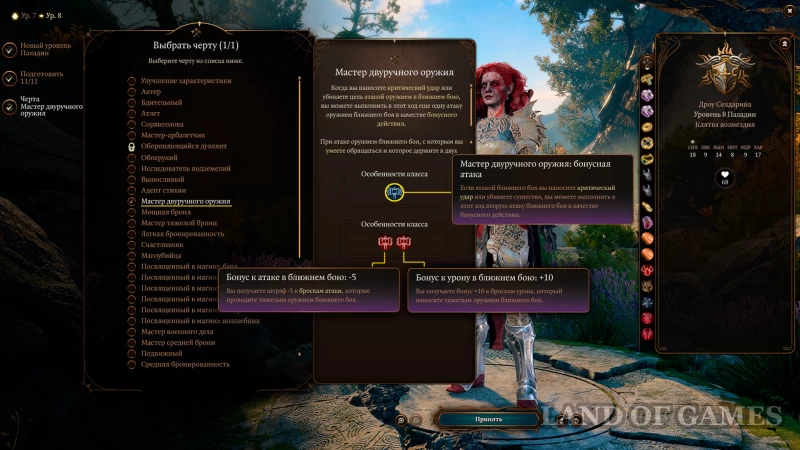
Теперь мы можем выбрать еще одну черту и заклинание. Главный выбор этого уровня – черта «Мастер двуручного оружия», которая добавляет паладину еще больше шансов на совершение убийства или атаки с повышенным уроном. При крит. попадании или убийстве цели вы получите дополнительную атаку ближнего боя и бонус +10 к урону двуручным оружием (но и -5 штрафа к броскам атаки). Эту способность можно деактивировать на панели инструментов по вкладке «Пассивы».
| Доп. заклинание | Черта |
|---|---|
С этой чертой у вас появляется не одно, а целых два бонусных действия за ход, которыми можно распорядиться так:
- Кастуете Божественную кару, от которой цель либо умрет, либо получит крит. урон;
- Получаете первое бонусное действие от «Дополнительной атаки» (с 5 уровня) и снова атакуете Карой – появляется еще один шанс на убийство или крит. попадание, от которого сработает действие новой Черты;
- Третий ход можно использовать по своему усмотрению, например также для нанесения урона.
И самое интересное, что это можно стакать с эффектами от чар Ускорения или Зелья скорости (которые тоже дают доп. ход).
Из заклинаний можно взять «Вызов на дуэль», которое улучшит паладина на позиции танка: враг принудительно сфокусируется на атаках по вам, а к другим целям будет действовать с помехой.
Уровень 9
С этим уровнем мы получаем 2 последних ячейки III круга (всего их получается 9) и два заклинания подкласса, приближающих нас к завершению сборки паладина.
| Скилы клятвы | Доп. заклинания |
|---|---|
|
|
|
Разберем подробнее пользу от подклассовых скиллов и подготовленных заклинаний:
- Защита от энергии. Дает стойкость к урону от стихий (грому, кислоте, холоду, молниям и огню) – нишевое умение, которое может сильно помочь вам в опасных битвах против проблемных элементалей или врагов с идентичным основным уроном.
- Ускорение. Увеличивает скорость цели и повышает класс доспехов на +2, давая возможность совершить доп. ход и с большим успехом выстоять в проверках на ловкость – еще одно из самых полезных умений сборки, увеличивающее кол-во атак за раз. Из минусов, после завершения эффекта, герой становится вялым (по сути, парализованным).
- Слепящая кара. Урон +3d8 (3~24 ед.), вероятность ослепить цель, от чего та получит помеху при атаках и не сможет действовать дальше 3 метров + по ней легче нанести повышенный урон – все это делает Слепящую кару одним из лучших навыков III круга, на который вы не должны жалеть ячейку заклинания.
- Стихийное оружие. Зачаровав оружие одной из 5 стихий на выбор, вы получаете +1 к броскам атаки и +1d4 к урону. Его можно назвать улучшенной версией заклинания «Божественная благодать» со 2 уровня, которое лучше всего использовать перед боем.
Совет по геймплею [9 уровень]: получив достаточно силы, вы можете максимально упростить игру за вашего паладина, сведя ее только к нанесению большого количества урона от Слепящей и Божественной кар. Саппортящие действия лучше всего возложить на других членов отряда, чтобы не тратить ячейки заклинаний.
Уровень 10
Здесь мы получаем не так много, поэтому коротко:
- Доп. заряд Возложения рук (теперь их 5);
- «Аура мужества» – активируемая пассивка на иммунитет к испугу для существ в радиусе 3 метров, которая пропадает только при потере сознания. Хорошая способность, не имеющая условий активации.
- Доп. заклинание «Возрождение» – возвращает цель к жизни с 1 ед. здоровья. Полезно в критической ситуации, особенно когда до цели воскрешения довольно далеко (скилл действует на расстоянии 9 метров).
Уровень 11
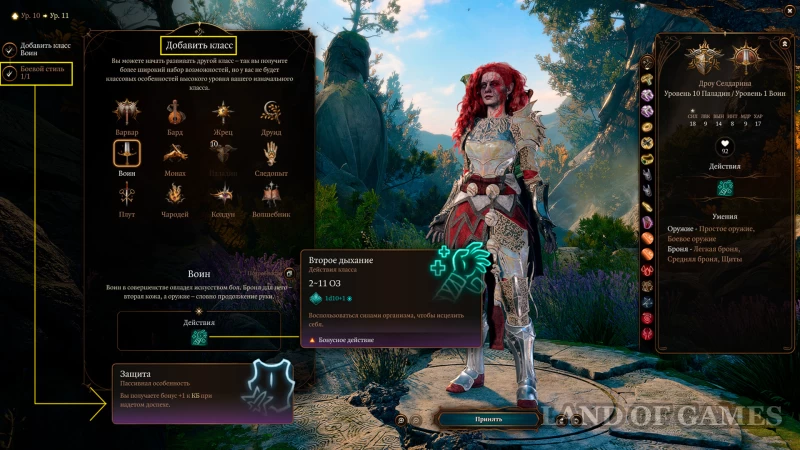
Итак, на 11 уровне мы будем добавлять класс Воина: последние два уровня Паладина не дают каких-то невероятных преимуществ, а вот способности Воина смогут расширить возможность совершать больше действий, а значит – наносить еще больше урона.
| Мультикласс | Боевой стиль | Новые умения |
|---|---|---|
|
Воин |
- Стиль боя «Защита» повышает вашу выживаемость, так как добавляет +1 класс к надетой на герое броне. Но если вы по какой-то причине на 2 уровне паладина не взяли «Двуручное оружие», то лучше брать его.
- «Второе дыхание» – средненькая хиллка бонусным действием, исцеляющая вам от 2 до 11 ед. здоровья.

Если вы хотите продолжить прокачку только за Паладина (или играете на Истории), то на 11 уровне вы получите уже точно последнюю, 10-ю ячейку заклинаний, магическое умение на выбор и «Улучшенную божественную кару» – постоянный бафф к лучистому урону на атаки оружием ближнего боя (+1d8).
Уровень 12

Завершающий уровень также отдаем классу «Воин», а взамен получаем очень важный скилл «Порыв к действию» – последний гвоздь в увеличение количества действий в 1 ход для нашего рыцаря. Это не требующее условий бонусное действие во время боя, которое дает вам бесплатный ход. Таким образом, вместе со всеми остальными улучшениями, ваш Паладин сможет совершить за раз до 7 действий (с учетом «Ускорения» или Зелья на скорость).
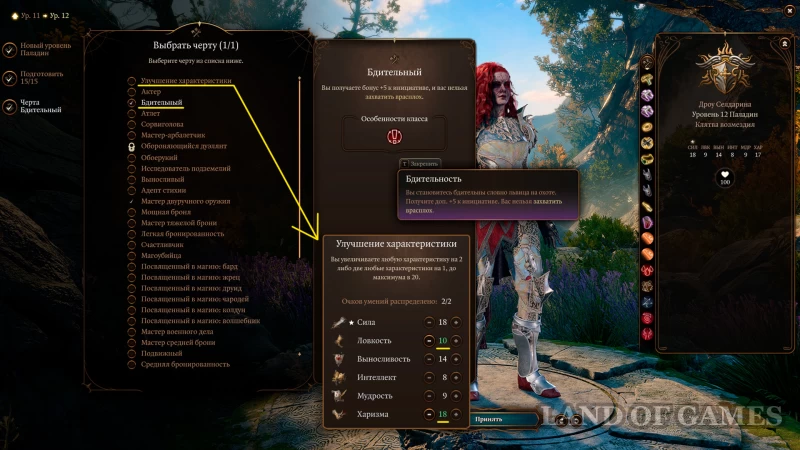
И для последнего уровня на Чистом паладине вам стоит выбрать Улучшение характеристик, либо черту Бдительный (если не брали на 4/8 уровнях). Лучше всего влить +2 в Силу, однако мы можем предложить еще один вариант: по очку в Ловкость и Харизму – эти вложения поднимут статы до уровня с обновленным бонусом к проверкам.
Уровни 3-10 через класс Барда
Итак, билд «Паладин + Воин» – это хорошо работающая классика. Но критический недостаток ячеек заклинаний, которых у нас по итогу всего-то 9, вынуждает высокоуровневого рыцаря света сильно экономить на многих вкусных навыках, отдавая приоритет Карам. Добавление в этот билд Барда повышает слоты заклинаний с 9 до 14 и дает несколько новых умений, принося в геймплей грузного паладина разнообразие.
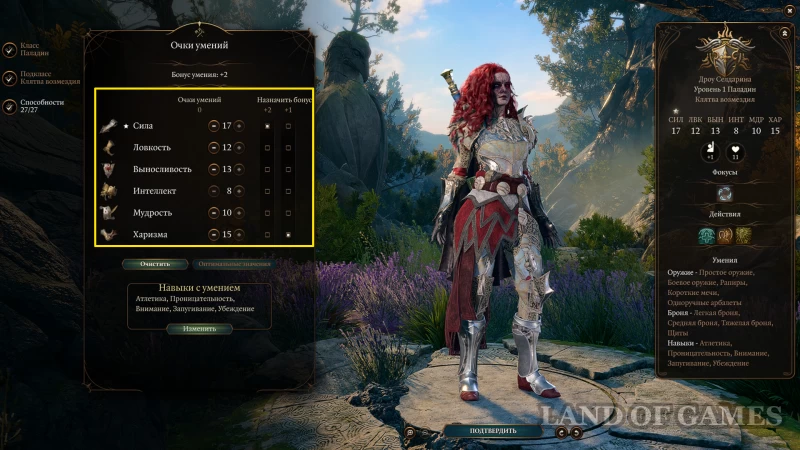
Это прокачка не будет подробной, а лишь затронет самые основные моменты сборки:
| lvl | Класс | Подкласс | Боевой стиль | Заклинания на выбор | Черта на выбор |
|---|---|---|---|---|---|
| Создание персонажа |
Паладин |
Клятва возмездия |
- | - | - |
| 2 | - | - | |||
| 3 |
Бард |
- | - | - | |
| 4 | - | - | - | ||
| 5 |
Бой парным оружием |
- | |||
| 6 | - | - | |||
| 7 | - | - | - | ||
| 8 | - | - | - | ||
| 9 | - | - | - | ||
| 10 | - | - | |||
| 11 |
Воин |
- |  Двуручное оружие Двуручное оружие |
- | - |
| 12 | - | - | - | - |
Мы не стали приводить все возможные варианты выбора заклинаний на уровнях, а также перечислять фокусы (они в сборке не так важны, ведь наша основа – паладин). Но можем дать совет: берите те, что повышают мобильность (Туманный шаг/Ускорение/Скороход) или дают преимущество в битве (Священное пламя).
Основные советы по игре
Создавая из паладина бойца ближней дистанции с мощным таргетным уроном и полезными навыками поддержки, вы можете учитывать следующие игровые особенности:
- Контролируйте расход ячеек заклинаний, ведь восстанавливаются они только после долгого отдыха – а это может сказаться на сюжете (особенно в срочных квестах, например ветке с Халсином и Рощей друидов);
- Ваше главное оружие – «Божественная кара». Обязательно настройте ответные действия для нее, а также используйте другие Кары (например, Громовую или Слепящую), отталкиваясь от уязвимостей врагов;
- Для исцеления лучше использовать зелья или навыки других членов отряда, не злоупотребляя хиллками самого паладина/длительными отдыхами;
- Отдавайте своему рыцарю самые тяжелые доспехи, а начать можно с гитьянских лат Лаэзель (если вы не планируете брать ее в отряд);
- Не забывайте про различные усиления перед началом боя: благословения от членов отряда и зелья;
- Хоть паладин и уверенный танк, не забывайте про контроль толпы (той же Громовой карой), чтобы не сделать его грушей для битья;
- Не забудьте про оружие дальнего боя, которое хоть и не является основным, поможет атаковать в особых ситуациях даже издалека;
- Чтобы активировать пассивку с черты «Мастер двуручного оружия» на получение доп хода, сначала сосредотачивайте свой урон на врагах с низким здоровьем – так вы повысите шанс их убить и получить бонусное действие.
Лучшие способности Иллитида

Желающим идти по пути обретения сил Иллитидов можем предложить присмотреться к следующим абилкам:
- Удача Дальнего Предела. Контратака, превращающая успешно выполненный удар в крит. урон по цели;
- Отбраковка слабых. Полезная абилка, если у вас уже довольно много навыков Иллитида: после атаки, если количество здоровья цели меньше числа ваших умений от паразитов, цель немедленно умирает и поражает существ в радиусе 3 метров на 1d3 (1~3 ед.) Психического урона (не сработает, если вы сразу добили врага);
- Псионическая отдача. Неплохая контратака против летящих в вас заклинаний, наносящая нападающему в радиусе 9 метров Психический урон около 8-12 ед.;
- Черная дыра. Замедляющее действие с огромным радиусом поражения, которое лучше всего кастовать подальше от вашего отряда (иначе они также получат очень неприятный дебафф).
- Бесплатное заклинание. Один раз до долгого привала отменит трату ячейки заклинания (нужно прожимать вручную);
- Отталкивание. Очень поможет, если вас взяли в кольцо (или на отряд кинули заклинания по типу Облака тьмы): способность отталкивает от вас всех в радиусе 6 м. и наносит 2d6 урон Силой (если цель пройдет проверку, способность не сработает, но все равно нанесет часть урона);
- Вытягивание характеристики. Пассивка на снижение характеристики в зависимости от применяемого на цель навыка (обратите внимание: бросок склянки с хилом на союзника также провоцирует активацию эффекта). Хороша, если имеется у всех союзников, и они также атакуют по выбранной вами цели;
- Благоприятное начало. Пассивка, плюсующая к перовому удару или проверке статов против цели ваш бонус умения (первая атака будет почти полностью игнорировать класса брони у цели раз в сутки и позволит нанести повышенный урон).
Вы можете скачать мод на сброс иллитидских способностей, чтобы плавно подойти к этому этапу прокачки своего паладина – ссылку на его скачивание мы указали в отдельном гайде (пункт «Лучшие геймплейные моды для BG3»).
Лучшие напарники
Если рассматривать самую сбалансированную сборку отряда под Паладина, то это будет хиллер/поддержка + два героя ближнего и дальнего боя. Стоит ограничить себя в добавлении к отряду дополнительных классов под ближний боем, а у той же Лаэзель лучше забрать броню (если вы не планируете играть с ней, это будет хорошим бонусом на начальном этапе игры).
Как известно, в Baldur’s Gate 3 вы сами можете поменять класс любого компаньона, благодаря чему ваша команда может состоять только из тех, кто приятен вам как личность. Но мы рассмотрим состав с которым вы легко сможете пройти всю игру, без учета этой функции:
| Герой | Класс | Преимущества |
|---|---|---|
 Шэдоухарт |
Жрец | Баффы, усиления, эффективное лечение, контроль толпы. |
|
Гейл |
Волшебник | Магический урон дальнего боя, атаки по группе противников и контроль толпы. |
|
Астарион |
Плут | Взлом замков, преимущество при скрытных атаках и навыки дальнего боя. |
Это лишь пример отряда, главное помнить: ваши напарники могут быть полезны не только из-за своего класса, но и расы, влияния на повествование, в диалогах и изучении открытого мира – подбирайте их под потребности сборки или вашего индивидуального отыгрыша.
Лучшее оружие и экипировка
В Baldur’s Gate 3 есть огромное количество боевого снаряжения, а с этим – и море выбора для экипировки паладина (поиск значительно упростит использование интерактивной карты BG3). Поделим перечисление лучших вариантов на два списка: ранние и поздние акты.
Ранняя игра
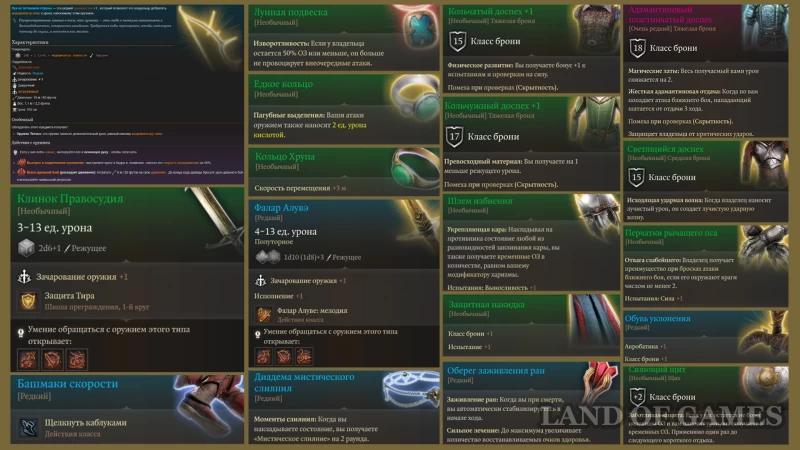
Голова:
- Диадема мистического слияния. Ясли И'ллек: лут с Пылкого Джерезата в палате Инквизитора;
- Шлем избиения. Акт 1, застава Селунитов в Подземье: вскрыв позолоченный ларец над помещением (X:163 Y:-248).
Плечи:
- Защитная накидка. Акт 2, таверна «Последний свет»: торг с квартирмейстером Талли;
Доспехи:
- Кольчужный доспех +1. Акт 1, у торговцев 5-6 уровней: Даммон в Роще друидов, Роа в лагере гоблинов или Дэррит в колонии миконидов;
- Кольчатый доспех +1 к испытаниям на проверку. Акт 1: у торговцев 2-4 уровней;
- Святящийся доспех. Акт 1, застава Селунитов в Подземье: ларец в скрытой комнате с проверкой Внимания (X: 176 Y: -247);
- Адамантиновый чешуйчатый доспех. Акт 1, Гримфордж: изготовление в Адамантиновой кузне.
Руки:
- Перчатки рычащего пса. Акт 1, лагерь гоблинов: в сокровищнице Дрора Разглина.
Ноги:
- Башмаки скорости. Акт 1, Подземье: награда от гнома Туллы за исцеление от яда двергаров (или с ее трупа);
- Обувь уклонения. Акт 2, таверна «Последний свет»: торг с малышкой Маттис.
Оружие:
- Клинок Правосудия. Акт 1, дом на Всхожей дороге: с паладина Тира Андерса, за его убийство или помощь в расправе с Карлах;
- Фалар Алувэ. Акт 1, Подземье: достать из камня через проверку Религии или Силы (X: 116 Y: -192);
- Лук из титановой струны. Акт 1, убежище Жентарим: после квеста «Найти пропавший груз» можно купить у Брема./ Акт 2, Лунные Башни: торг с Ланном Тарвом после проверок в диалоге.
Щиты:
- Сияющий щит. Акт 1, хребет за лагерем гоблинов: запертый ларец (X:-53 Y:461).
Украшения:
- Едкое кольцо. Акт 1, Подземье: торг с Дэррит в колонии миконидов;
- Кольцо Хрупа. Акт 1, Лагерь гоблинов: с Хрупа (убить или снять во время диалога с поцелуем пятки);
- Лунная подвеска. Акт 1, селунитовый ларец в гнезде медвесыча (X:86 Y:448).
Поздние акты
Голова:
- Шлем Балдурана. Акт 3, Святилище Дракона (X: 636, Y: -964).
Плечи:
- Плащ ускользания. Акт 3, Драконий Перекресток: торг с Энтхарлом Дантелоном в «Танцующем топоре Дантелона»;
- Плащ растворителя плоти. Акт 2, позолоченный ларец в морге Дома Исцеления.
Доспехи:
- Объятья Жнеца. Акт 2: лут с Кетерика Торма;
- Броня Баала. Акт 3, Трибунал убийств: торг с Эхом Абазигала после получения статуса Нечестивого Убийцы;
- Броня Адского сумрака (Доспехи адского заката). Акт 3, Дом Надежды: лут с Рафаила.
Руки:
- Рукавицы Воителя. Акт 3, Драконий Перекресток: торг с Энтхарлом Дантелоном в «Танцующем топоре Дантелона»;
- Поврежденные перчатки адского сумрака. Акт 2, Даммон в таверне «Последний свет» (если жив): за Адское железо;
- Рукавицы темного юстициара. Акт 2, Вызов Шар: на горе ящиков (X:-660 Y:-760);
- Рукавицы силы холмовых гигантов. Акт 3, экспонат в архиве Дома Надежды;
- Наследие мастеров. Акт 3, Нижний город: торг с Даммоном в «Кузнице девяти» (если жив).
Ноги:
- Адские сапоги. Акт 3, Драконий Перекресток: ларец с вершины замка на Змеиной скале (X: -32 Y: 219).
Оружие:
- Алебарда Бдительности. Акт 2, Лунные Башни: торг с Ланном Тарвом после проверок в диалоге;
- Трезубец Волн. Акт 3, Счетная палата: в Особо защищенном хранилище №4;
- Убийца великанов Балдурана. Акт 3, Змеиный путь: лут с Ансура;
- Мертвый выстрел. Акт 3, Арсенал Штормового берега в Нижнем городе: торг с Фитцем Фейеверком;
- Короткий лук темного огня. Акт 2, конюшня около таверны «Последний свет»: торг с Даммоном.
Украшения:
- Амулет Великого здоровья. Акт 3, экспонат в архиве Дома Надежды.
- Амулет арфистов. Акт 2, таверна «Последний свет»: торг с квартирмейстером Талли;
- Кольцо безжалостного света. Акт 2, Вызов Шар: ларец в хранилище рядом с Бальтазаром (X: -821 Y: -752).
- Кольцо Регенерации. Акт 3, «Волшебные принадлежности» в Нижнем город: торг с Роланом или Проекцией Лорроакана;
- Любовь убийцы. Акт 2, Вызов Шар: на полу около местонахождения теневой копии вашего ключевого персонажа в «Испытании самоповторения» (X: -833 Y: -729).
Лучшие зелья и эликсиры
Среди зелий на разнообразные баффы вам определенно пригодятся эти:
- Зелье скорости: +2 к броне, бонусный ход, ускорение и бонус к проверкам ловкости;
- Эликсир силы холмового великана: + к Силе до 21, пока герой не совершит долгий привал;
- Эликсир кровожадности: +5 ед. к здоровью и бонусный ход после убийства цели;
- Яд дроу: бонус к урону оружием, вешающий на цель действие яда и повышающее вероятность того, что та заснет;
- Зелье полета: полет бонусным действием на 10 ходов;
- Эликсир бдительности: +5 к инициативе и вас не смогут заставь врасплох.
- Эликсир героизма: +10 ед. к здоровью и эффект заклинания «Героизм» до долгого отдыха;
- Эликсир злобности: увеличение шанса крита на 1 (стакается со схожими абилками класса);
- Масло точности: +2 к броскам атаки оружием, на которое нанесен состав;
Расширить арсенал вашего паладина можно не только при исследовании мира игры, но и с помощью различных модов на оружие, доспехи и даже заклинания: их полный список и способы установки мы подробно описали в отдельном гайде.
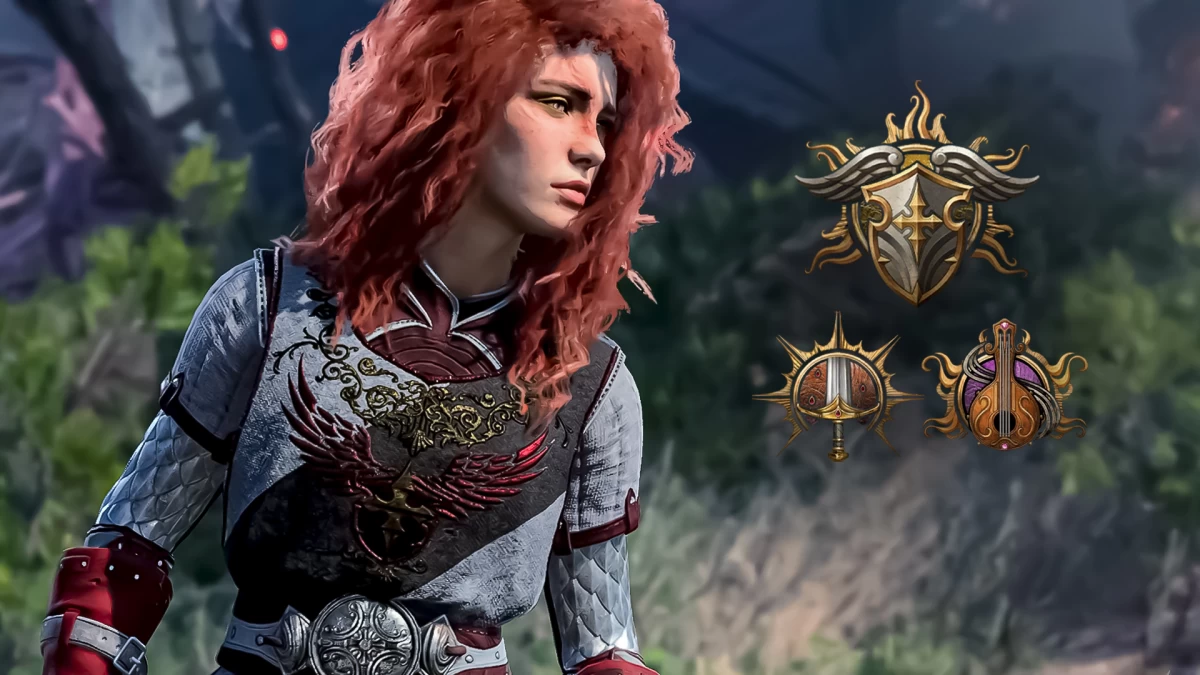
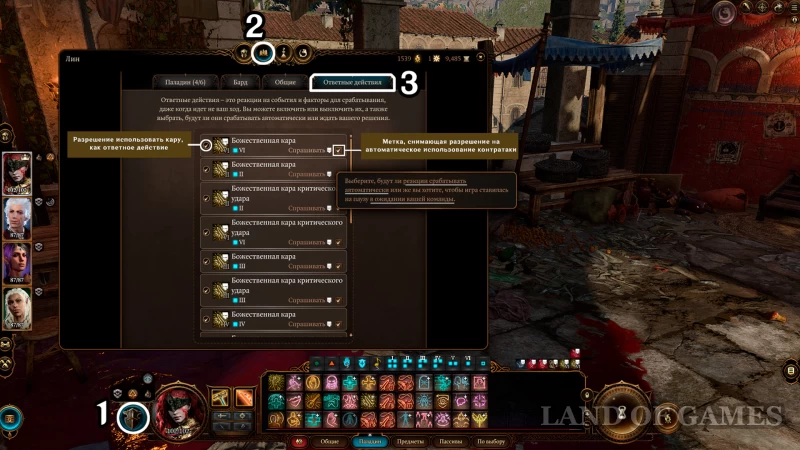
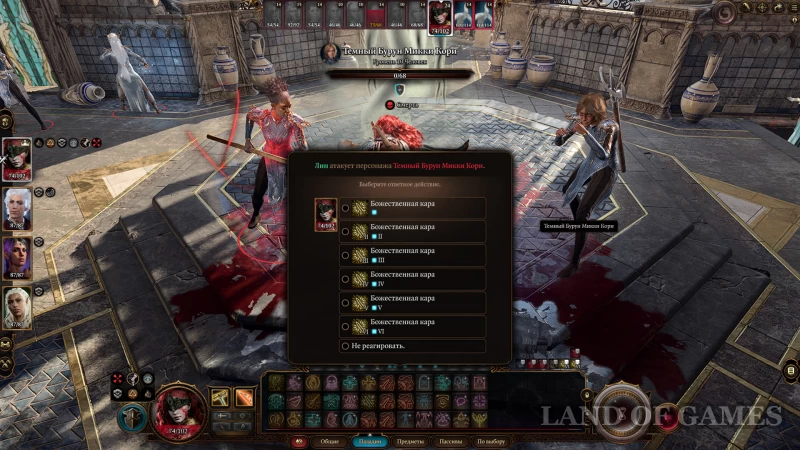
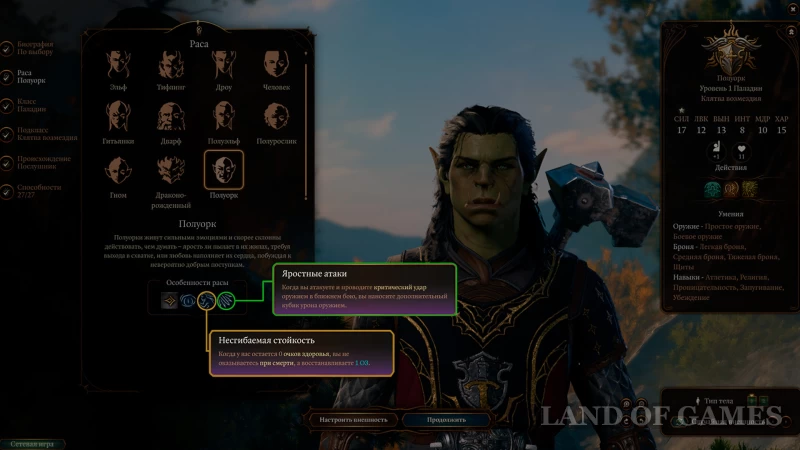
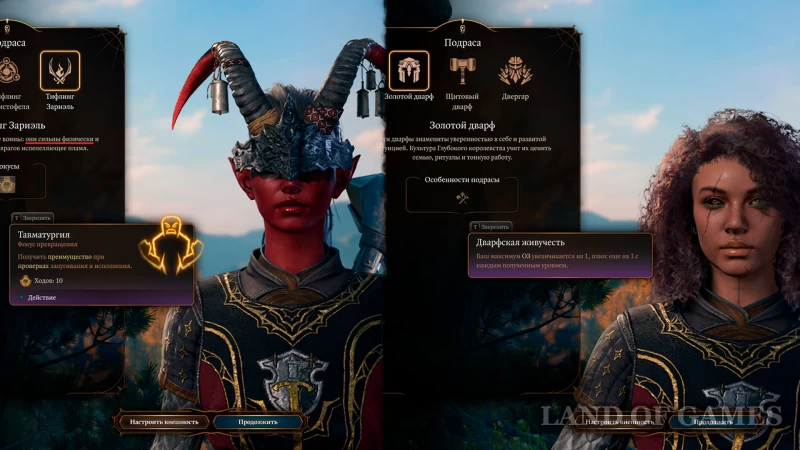



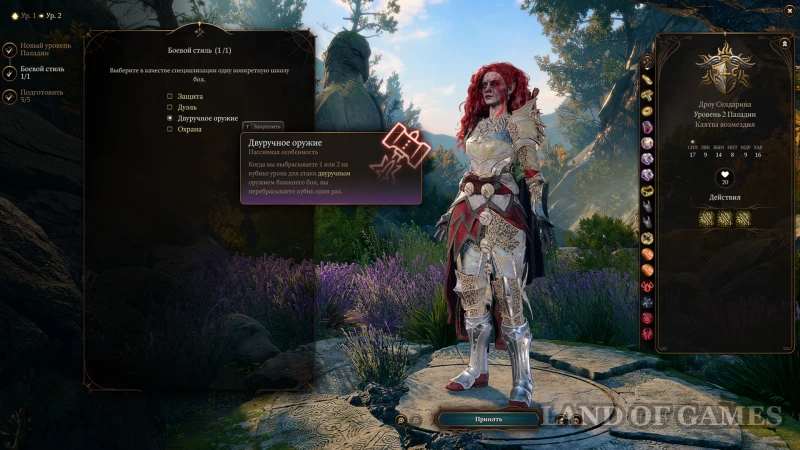
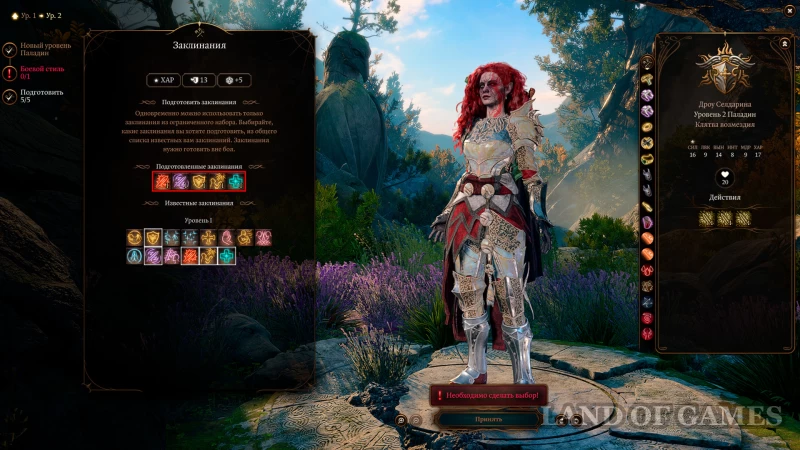
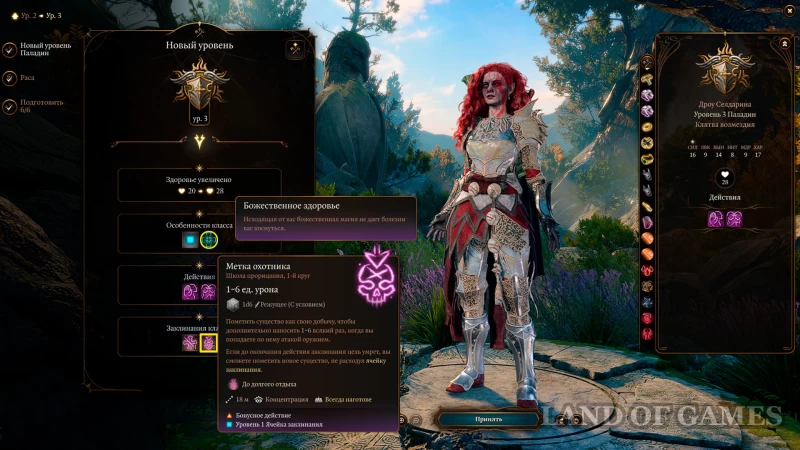

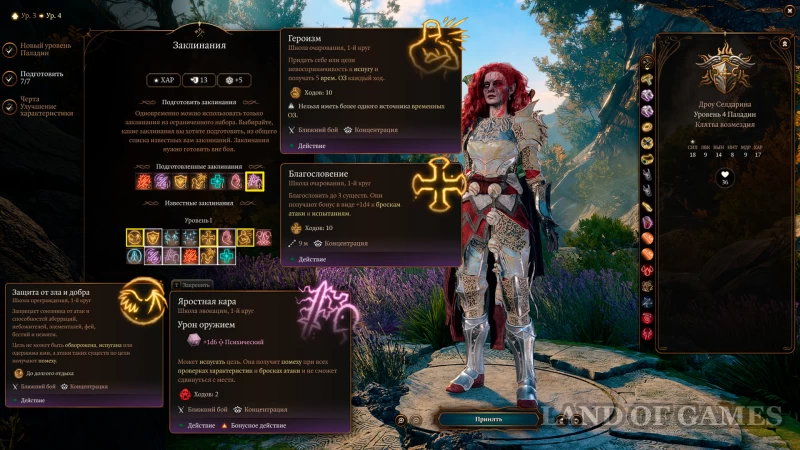
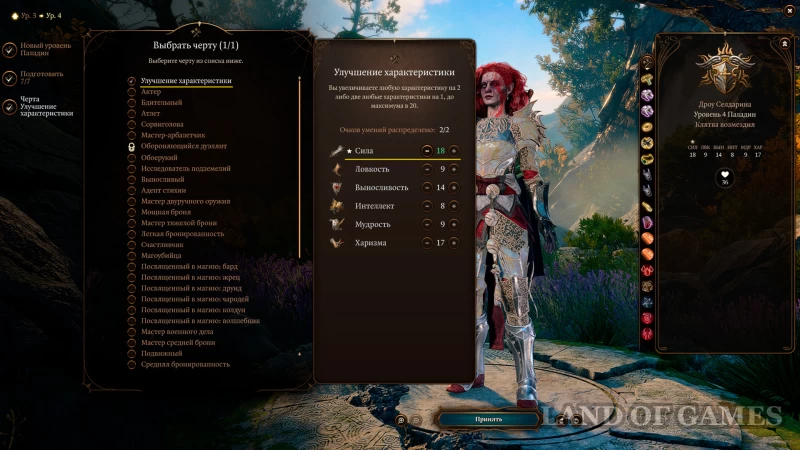
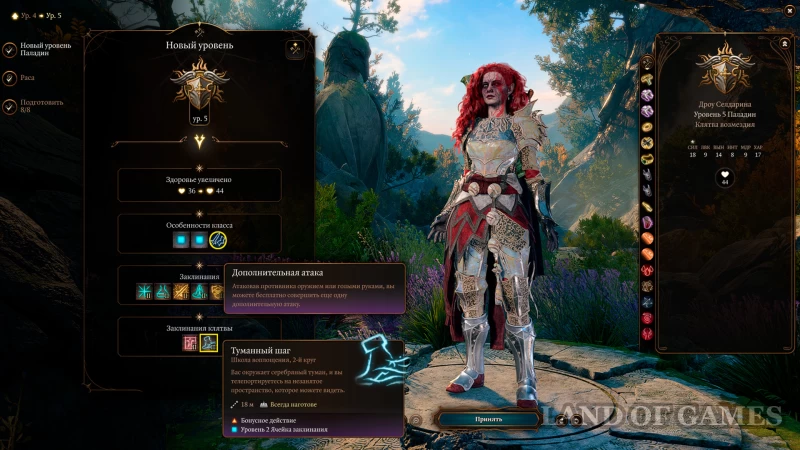
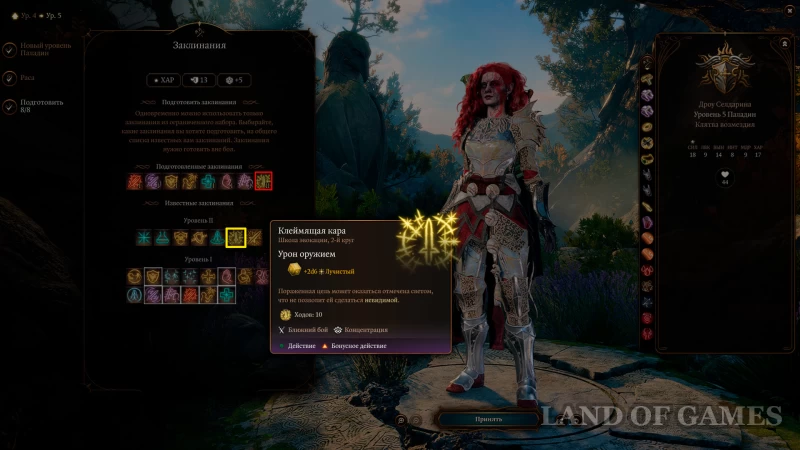
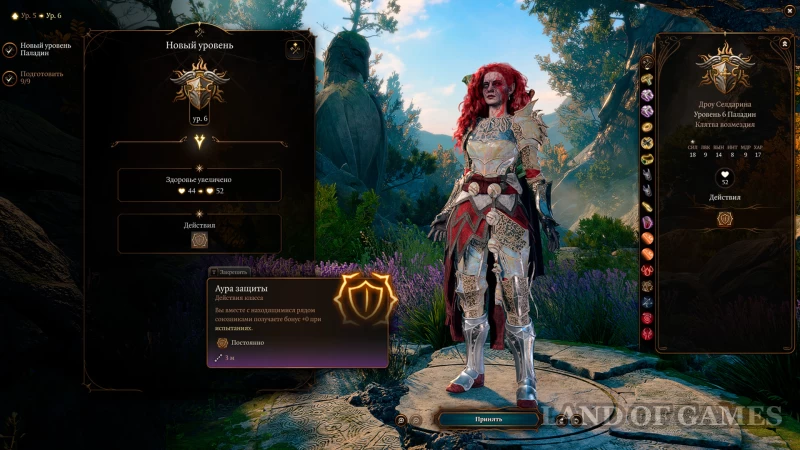
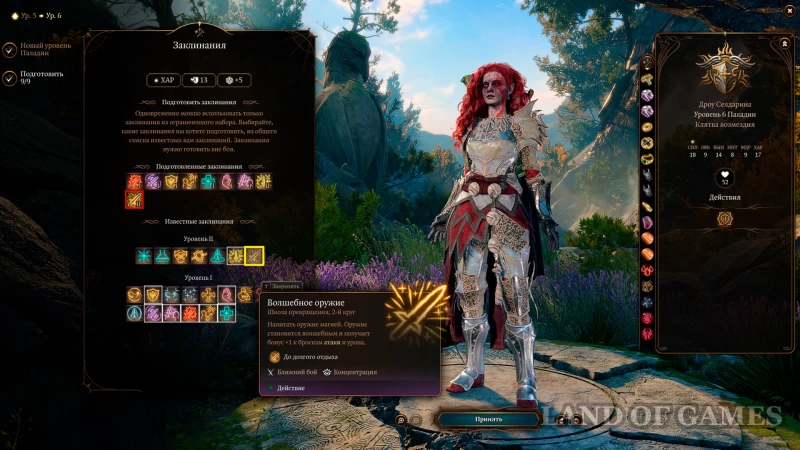
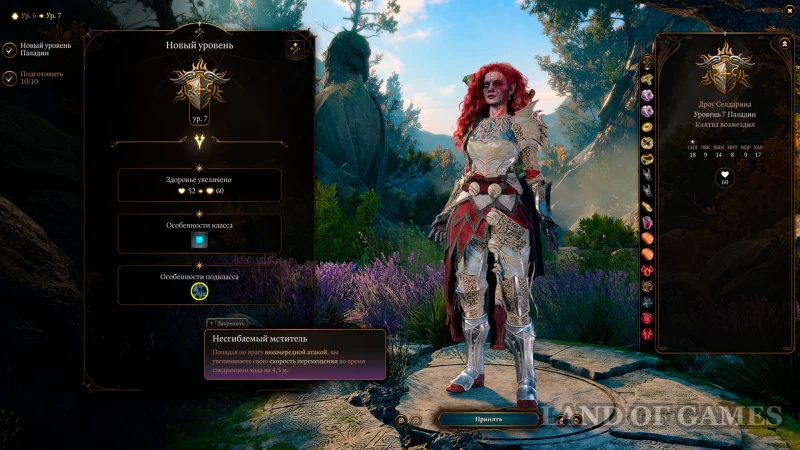
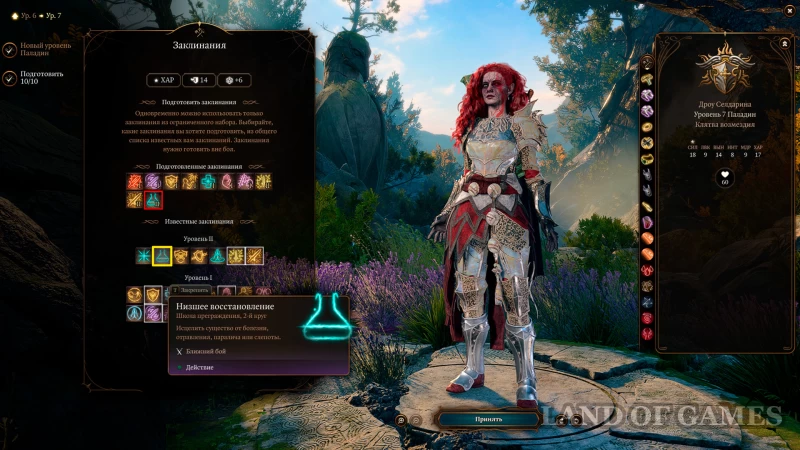
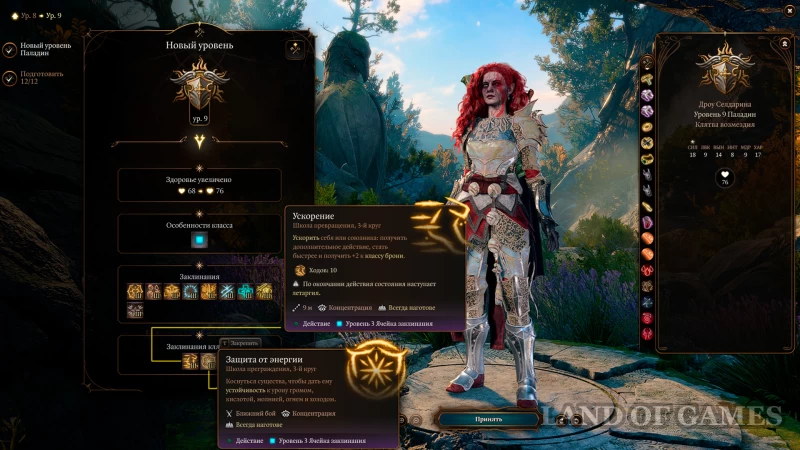
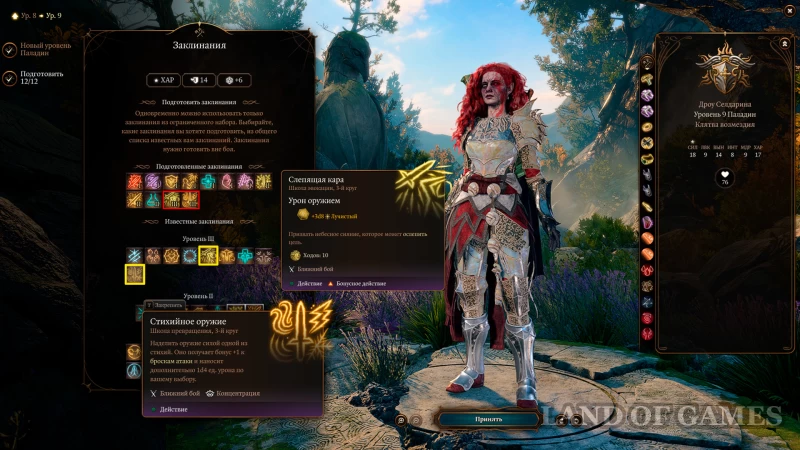
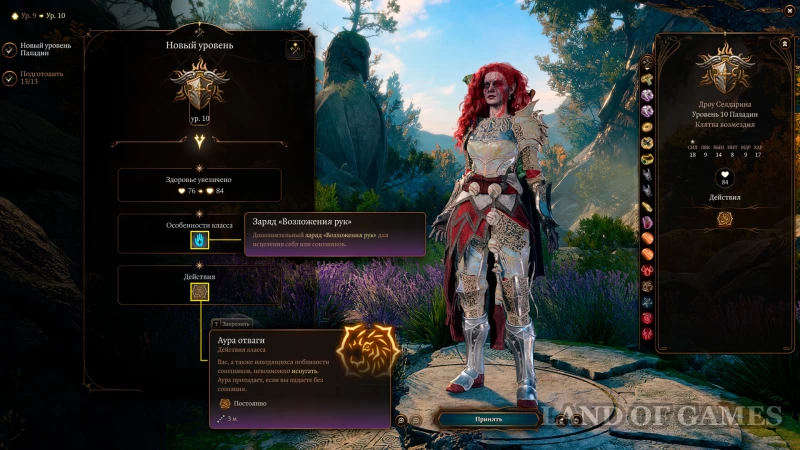

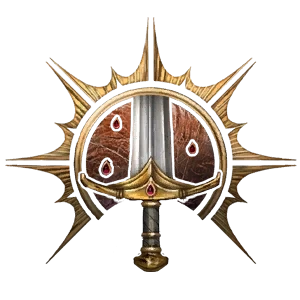
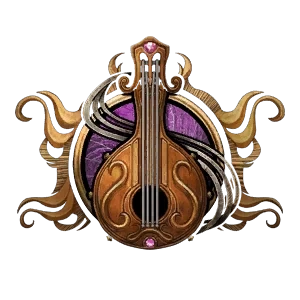




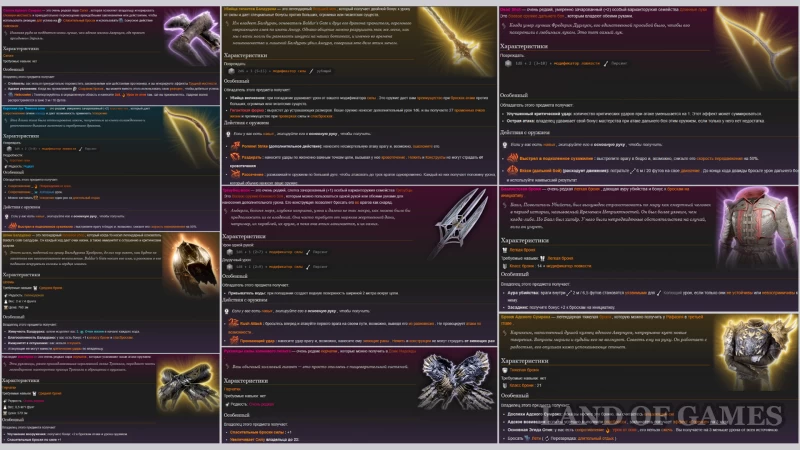
Комментарии
Для добавления комментариев необходимо авторизоваться.
Вы можете войти через